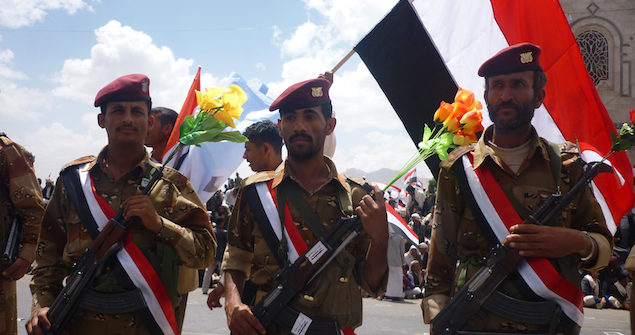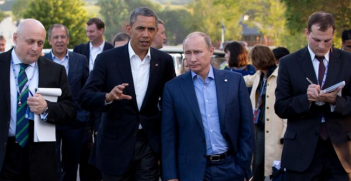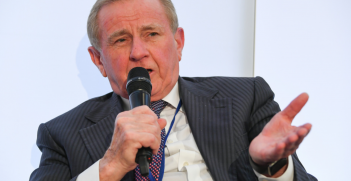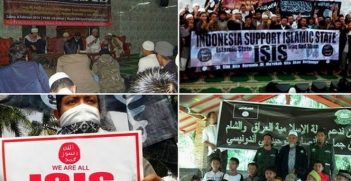Yemen: Faint Hopes for Peace

The US’s declining significance as a regional security guarantor in the Middle East, and Iran’s growing regional influence, offers little hope for a permanent truce in Yemen.
For nearly two months, Operation Decisive Storm, led by Saudi Arabia and supported by 11 other nations including the US, has torn apart Yemen and ushered in yet another humanitarian crisis in the Middle East. While the five-day ceasefire agreement, which ended at 11pm on the 17th May, was welcome news, there is little optimism to suggest that this has brought the warring parties closer to a permanent peace framework in Yemen.
The crisis in Yemen, like so many others, turns on the question of power and influence. Critically, it has morphed into a proxy sectarian battle administered by Saudi Arabia and Iran. The Houthis, a Shia Iranian proxy militia, are loyal to Ali Abdullah Saleh, the long-serving president who was ousted in the 2012 Arab Spring. The Saudis, on the other hand, are seeking to reinstall their Sunni protégé, Abd Rabbo Mansour Hadi, who replaced Mr Saleh, but is now in exile in the Saudi capital, Riyadh.
In a bid to broker a peace deal, Ismail Ould Cheikh Ahmed, the latest UN envoy to Yemen, arrived in Riyadh to reignite political dialogue and bring about a permanent truce. But this meeting, which included over 400 delegates, was boycotted by the Houthi leadership – which then ultimately reinforced Saudi Arabia’s military strategy and the ‘anti-Houthi’ sentiment that underpins their military push into Yemen.
Iran’s growing influence in the region and its strong support for Hezbollah, Hamas, Syria and now for the Houthis in Yemen presents a geo-strategic threat to the Sunni-led Gulf States. The Saudi leadership has begun demonstrating a willingness to subvert Iran’s Shia militia, through military means.
While this Iranian threat is nothing new for the Saudis, they have, until now, had a deterrence strategy, underpinned by their US alliance. This alliance, however, is currently being tested. Saudi Arabia is beginning to lose confidence in the US as a security guarantor against the Iranian geo-strategic threat. The willingness of the US to allow the Iranian Quds Force to control key moments in the war against ISIS, in addition to its willingness to engage in a nuclear deal with Iran, has left the Saudis feeling isolated. The result is that the latter has taken a more assertive and dominant role in the Middle East – demonstrated through the recent Saudi-led air campaign in Yemen.
The recent US decision to reject a Gulf proposal to forge a common defence treaty has further heightened tensions. This rejection was promptly followed by the announcement that Saudi King Salman would not attend President Obama’s Camp David summit. This tenseness in relations, which was originally informed by the Carter Doctrine in 1979, represents a fundamental shift in the region and intensifies the geo-politics and sectarian tensions underpinning the Saudi military campaign in Yemen.
Indeed, the recent loss of the strategic town of Ramadi in Iraq and the subsequent decision by Iraqi Prime Minster, Haider al-Abadi, to call on the Iranian-aligned Shiite militias to join the battle, will only reinforce the Saudi leadership’s understanding of Iran’s growing regional influence and the subsequent necessity to use military means to achieve their political ends.
As a consequence of the US’s declining significance as a regional security guarantor and the increasing regional Iranian influence, domestic support for King Salman’s Saudi military campaign has intensified. King Salman, who recently acceded to the throne on the death of his half brother, King Abdullah, will have noticed such support and will be looking to use this as a way to reaffirm his leadership in the wake of the civil unrest that swept through the Gulf region in the Arab Spring.
The UN Office for the Coordination of Humanitarian Affairs, estimates that, since the conflict began in Yemen, 1,820 people have died, 7,330 have been wounded and more than half a million have been displaced. And while the five-day humanitarian ceasefire provided the opportunity to usher in aid, medicine and fuel to war-torn Yemen, the regional geo-political tensions remain, suggesting that a permanent truce is no closer in sight.
Anthony Ricketts is a PhD student at the University of Queensland. His research focuses on the link between US foreign policy and sectarianism in the Middle East. He can be contacted at Anthony.ricketts@me.com. This article can be republished with attribution under a Creative Commons Licence.





